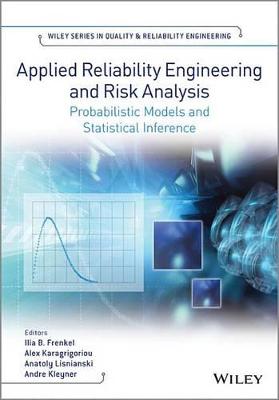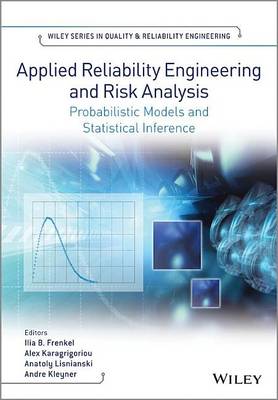Quality and Reliability Engineering
4 total works
Applied Reliability Engineering and Risk Analysis
by Ilia B. Frenkel, Alex Karagrigoriou, Anatoly Lisnianski, and Andre V. Kleyner
Published 22 August 2013
This complete resource on the theory and applications of reliability engineering, probabilistic models and risk analysis consolidates all the latest research, presenting the most up-to-date developments in this field. With comprehensive coverage of the theoretical and practical issues of both classic and modern topics, it also provides a unique commemoration to the centennial of the birth of Boris Gnedenko, one of the most prominent reliability scientists of the twentieth century.
Key features include: * expert treatment of probabilistic models and statistical inference from leading scientists, researchers and practitioners in their respective reliability fields * detailed coverage of multi-state system reliability, maintenance models, statistical inference in reliability, systemability, physics of failures and reliability demonstration * many examples and engineering case studies to illustrate the theoretical results and their practical applications in industry Applied Reliability Engineering and Risk Analysis is one of the first works to treat the important areas of degradation analysis, multi-state system reliability, networks and large-scale systems in one comprehensive volume. It is an essential reference for engineers and scientists involved in reliability analysis, applied probability and statistics, reliability engineering and maintenance, logistics, and quality control. It is also a useful resource for graduate students specialising in reliability analysis and applied probability and statistics. Dedicated to the Centennial of the birth of Boris Gnedenko, renowned Russian mathematician and reliability theorist
Key features include: * expert treatment of probabilistic models and statistical inference from leading scientists, researchers and practitioners in their respective reliability fields * detailed coverage of multi-state system reliability, maintenance models, statistical inference in reliability, systemability, physics of failures and reliability demonstration * many examples and engineering case studies to illustrate the theoretical results and their practical applications in industry Applied Reliability Engineering and Risk Analysis is one of the first works to treat the important areas of degradation analysis, multi-state system reliability, networks and large-scale systems in one comprehensive volume. It is an essential reference for engineers and scientists involved in reliability analysis, applied probability and statistics, reliability engineering and maintenance, logistics, and quality control. It is also a useful resource for graduate students specialising in reliability analysis and applied probability and statistics. Dedicated to the Centennial of the birth of Boris Gnedenko, renowned Russian mathematician and reliability theorist
Reliability, Availability and Maintainability Standards
by Milena Krasich, Dustin Aldridge, and Andre V. Kleyner
Published 8 November 2019
The intent of this book is to present technical information that reliability practitioners need for use on various different Reliability, Availability and Maintainability (RAM or using the umbrella word, Dependability) analyses that may not be found in technical textbooks but are available in various standards. Globally, Dependability is frequently not a part of the technical curricula offered in college educations and when it is, the breath of information may be confined to selected models, topics and practices, whilst others may not be fully addressed or even covered. The book will offer a brief introduction to RAM Engineering topics and deliverables. It will also provide information on the most common standard bodies that have published significant resources for those deliverables including analysis methods and key models. Each clause and topic will refer to appropriate and applicable standards with an assessment of their applicability and relevance; the industries their standards are tailored for; the strengths and weaknesses. Skills, data, and knowledge required to effectively use the standard including ease of understanding will also be addressed.
The book describes, in great detail, reliability measures and activities that are used and undertaken throughout the software lifecycle. This includes activities starting from its requirements review and early reliability predictions and FMEA, the design and incremental test with software reliability improvement, integration into the system with the reliability modelling of hardware and software, through software or system field reliability data analysis. Divided into 10 chapters, the book presents the methodology with the appropriate and simple mathematics which is consistently used in all analyses, is easy to follow, and does not require special software tools except to facilitate system modelling for faster analyses. With the consistent mathematical approach, all assumptions used for early software reliability estimation are validated through analysis of the test and field data, and software reliability growth is planned and tracked against the same mathematical tools.


